Cows and the Environment: A Surprising Connection
Effect of Cows ?
What is the real cost of a steak dinner: A day’s wage or the destruction of an ecosystem?
PETA insists that meat is murder. Americans are yet to be dissuaded. But for as long as there have been nice things, there have existed smart alecs to ruin them. An insidious proposition has recently been making its play. Cows flatulence is 70-120kg of Methane gas into our atmosphere annually.
The argument goes that Methane, a Greenhouse Gas, traps heat which negatively impacts Earth’s climate. Livestock specifically contributes 26% of all Methane! Therefore, red-blooded Americans must curb their appetite for succulent sirloins otherwise Earth becomes a furnace!
 Obama declares War on Dairy
Obama declares War on Dairy
The US government aims to reduce Methane output from bovines by 25% before the decade closes. But would this significantly impact climate scientists’ models? Here is a breakdown of cattle per top 5 countries. We’ve provided our own high-end annual Methane output estimates.
1) India: 301,600,000 cows. 39,894,851 US tons.
2) Brazil: 219,093,000 cows. 28,981,043 US tons.
3) China: 100,250,000 cows. 13,260,805 US tons.
4) United States: 91,988,000 cows. 12,167,929 US tons.
5) European Union: 88,600,000 cows. 11,719,774 US tons.
If the entire US population shunned beef, cattle Methane output would not fall even 10%.
“Like, just get rid of all the cows, man.”
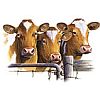 Assuming cows collectively drop dead tomorrow, the effects would be disastrous. Sure, global Methane output is cut by a quarter. Warming would theoretically decline and Arctic permafrost melt slow. But, even climate scientists acknowledge Earth cannot completely reverse gears. There is a guaranteed amount of climate change. Cows on the other hand play a delectable role.
Assuming cows collectively drop dead tomorrow, the effects would be disastrous. Sure, global Methane output is cut by a quarter. Warming would theoretically decline and Arctic permafrost melt slow. But, even climate scientists acknowledge Earth cannot completely reverse gears. There is a guaranteed amount of climate change. Cows on the other hand play a delectable role.
The obvious drawback, albeit manageable, is no beef and considerably less dairy. On the plus side, Cornell University estimates 800 million people could be fed with livestock grain. I personally prefer steak over Shreddies, but c’est la vie.
Cornell professor David Pimentel notes that 100,000 litres of water are used for every kilogram of food. The average American consumes 666 litres daily! An omen? Eliminating cattle lets us mitigate water shortages at the very least.

Beef makes a colossal contribution to America’s economy. The industry exported $6.6 billion worth of American beef in 2013. Ranching families provide 33 million beef calves annually and meat packing plants are typically the largest local operation. Generations would forever change without beef. That number doesn’t even include dairy products.
Meat is a complete dietary protein source.
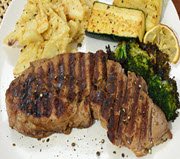 You’ve probably heard experts mention the ‘building blocks’ of protein, amino acids. Animal meat contains the 9 amino acids essential to human growth. In fact, meat’s amino acid profile is nearly identical to that of human musculature.
You’ve probably heard experts mention the ‘building blocks’ of protein, amino acids. Animal meat contains the 9 amino acids essential to human growth. In fact, meat’s amino acid profile is nearly identical to that of human musculature.
Meat consumption therefore expedites recovery after surgery or resistance exercise by restoring muscle tissue.
Beef in particular is loaded with Iron, Zinc, Phosphorus, Selenium and Vitamin B-12. The latter, B-12, originates from animal-based products and is mandatory for blood formation. B Vitamins support our nervous system and brain functions while Zinc and Phosphorus maintain musculature.
Those deficient in Iron are anemic. Ergo, they have dangerously few red blood cells, which carry oxygen to the brain. An Iron-rich steak is what the doctor ordered before and after donating blood. Selenium performs numerous essential roles in our bodies.
Animal meat contains an assortment of non-essential goodies that may positively affect our health. The two most familiar thanks to mass marketing are Creatine and Taurine. Creatine promotes muscle growth while Taurine (Used in Red Bull!) supports heart and muscle function. Ironically, drinking Red Bull might make your heart explode. Which brings us to heart complications.
There is no consensus on how red meat contributes to heart disease. Some studies show consumption increases risk while others can’t replicate this finding. Health ‘gurus’ have flip-flopped on beefs role in attaining a body worthy of Adonis.
Interestingly, meat-eaters are less likely to consume fruit, vegetables, and fiber – all essential for balanced diets. Health conscious individuals shun beef perhaps due to the stigma attached. Therefore, meat consumption may only be associated with unhealthy life choices. Put down the pub grub and pick up a dumbbell!
When someone requests their steak Well Done, politely, yet firmly, ask them to leave.
Overcooking poultry, fish, or beef releases cancer-causing substances called Heterocyclic Amines. Consuming any meat that is fried, grilled, or baked increases risk of developing colon, breast, or prostate cancer. That said, there is no consensus that Heterocyclic Amines are the largest promoter of cancerous growth.
Milkshakes: From our yard to yours.
 Gym aficionados would miss out on a muscle building staple, Whey. Whey protein is extracted from cow’s milk and, according to Men’s Fitness, is a rich source of essential amino acids. It digests easily and is absorbed faster than other protein sources. Old school bodybuilders would consume cows milk by the gallon.
Gym aficionados would miss out on a muscle building staple, Whey. Whey protein is extracted from cow’s milk and, according to Men’s Fitness, is a rich source of essential amino acids. It digests easily and is absorbed faster than other protein sources. Old school bodybuilders would consume cows milk by the gallon.
Muscle and Fitness contributor Ric Drasin recalls that in the 1967, Some
Even though milk products aid bodybuilders, the Godfather of Fitness, Jack Lalanne, eschewed milk.
Look, are you a suckling calf? Name one creature on Earth that uses milk after its weaned… A cow has four stomachs. You don’t. You can’t handle whole milk.
Indeed, Calcium, milk advocates oft-touted ‘smoking gun’ is found in orange juice. Our sun (Located in the Milky Way) conveniently beams Vitamin D directly into your skin. Eggs, a breakfast staple, also contain Vitamin D. Fruits, vegetables, nuts, and legumes are chock full of Riboflavin.
Don’t let the corporations fool you. Approximately 65% of Earth’s population experience lactose intolerance.
What could replace beef and dairy?
Okay, let’s suppose Dairy Queen is forced to change its name.
Milk products are caloric ally dense. You’d probably need to buy smaller fitting clothes. That’s not to say free market wouldn’t find a replacement. 
Believe it or not, goat milk is consumed in greater quantities than whole milk across the globe. It may sometimes be drank by the lactose intolerant.
Coconut milk’s texture is closest to that of whole milk. You could make your own with desiccated coconut flakes. It’s easier than hauling a quadrupedal animal around.
 Then there are vegan meat alternatives. Grazing cattle clear pastures for seeding. Uncleared pastureland would be more susceptible to wild fires. Other ruminant animals could theoretically take on this role.
Then there are vegan meat alternatives. Grazing cattle clear pastures for seeding. Uncleared pastureland would be more susceptible to wild fires. Other ruminant animals could theoretically take on this role.
The United States is the worlds largest producer of soybeans and hence Tofu. Jackfruit looks astonishingly like meat but only Florida, Nevada, Texas, and Arizona’s climate support jackfruit tree growth. Legumes (beans) are a protein source, if an incomplete one.
Effect of Cows on the Environment
Methane lives life in the fast lane.
 Though Methane’s potency is 25 times that of Carbon Dioxide, it is relatively short lived. Climate scientists cap Methane’s lifespan at 12 years. Carbon Dioxide lasts over a century!
Though Methane’s potency is 25 times that of Carbon Dioxide, it is relatively short lived. Climate scientists cap Methane’s lifespan at 12 years. Carbon Dioxide lasts over a century!
The Agri-Food and Bio sciences Institute in Northern Ireland suggests ranchers have financial interest in reducing Methane emissions.
Eco-friendly bovines may live longer and require less feed. To that end, researchers have proposed alternative recipes. A cow’s typical dinner consists of cellulose from grass. Unlike humans, cattle digestion utilizes methanogens, microbes which extract nutrients from cellulose. The by-product is Methane gas.
It has been proposed that adding nitrogen to the cattle diet reduces emissions. The resulting gas from digestion is Ammonia opposed to Methane. Ammonia is preferable when combating climate change. And studies have been promising! Nitrates are shown to cut Methane emission by 70%. Growth, appetite, milk and dairy production are not impacted negatively.
However, death has been an unfortunate side-effect. Nitrate is broken down into Nitrite, which is toxic. OOPS!!
Yet science perseveres! Researchers have supplemented Nitrate with Oregano. It’s natural – and costs a fortune. The cattle consumed 500 grams per day! Cashew by-product reduces Methane emission, but only by 8%. Synthetic additives dropped emissions by 30% and caused weight gain. Unfortunately, the cow’s stomach eventually adapts and emissions level off.
Corn and soybean digestion yield similar Methane emissions but increase milk production. Our climate therefore benefits from an economy of scale. Even if total Methane levels remain the same, dairy farmers get more bang for the buck. Problem somewhat solved, right? Well, corn and soybean logistics has its own carbon footprint. Their overall cost does not justify increased production.
Cattle will shun a solution that tastes bad. Who knew barnyard animals had such distinguished palettes? Modern research is heading towards vaccinate administration. It’s familiar, efficient, and does not yet appear to have negative side-effects.
Here’s one more knowledge nugget: Manure accounts for 10% of total U.S. Methane emissions. Most Methane from cattle are in their droppings.
In conclusion, scientists have yet to reduce cattle Methane emissions without immediate economic fallout.
Enough serious talk. Here are aMOOOsing cow facts.
Zero cattle breeds are native to American soil.
Today there are nearly 92 million cows. Who do we blame for spiking our national footprint? Predominantly Spanish and English settlers. Ponce de Leon brought cattle over on his 1521 expedition. The first hoof touched down in Florida.
Christopher Columbus not only colonized America, he indirectly inspired an NCAA athletics programs. Texas Longhorns trace their lineage from cattle introduced into the Dominican Republic. Who do we have to thank? Yup, Ol’ Chris. His cattle migrated through Mexico into the United States.
Herefords are so named after their birthplace, Hereford, England. Henry Clay was the first American to import Hereford to his Kentucky ranch in 1817.
Plymouth colony imported two Devon breed heifers and a bull. This breed was a triple threat and reliably carried out farm duties, made quality milk, and tasted delicious. Through centuries of selective breeding they have become known as American Devons. American Brahmans, however, have the distinction of being our first unique breed developed from Indian Bos cattle.
There are over 800 known cattle breeds worldwide.
The average cow lives 15 years. Unless you’re factoring in beef cattle, then their average lifespan is 5 years.
There have been instances of cattle imitating canines. ‘Milkshake’ the cow bonded with animal-rescuer Beth DiCaprio and her two dogs. She has no interest in socializing with cattle but enjoys going for walks. Milkshake follows owner DiCaprio everywhere and greets her when she arrives home.
Dogs may be colorblind but for cows it’s Christmas all year because cows can only perceive red and green colors in 360 degrees!
When it comes to smell, cows beat dogs are their own game. Cows can pick up a scent as far as 6 miles away.
Mothers are occasionally inclined to ask their children if they were raised in a barn.
Cows chew their food 50 times per minute. It’s not accurate to say cows have 4 stomachs. They actually possess 1 stomach and 4 digestive compartments.
Think hard: Have you ever seen a cow with top teeth? Teeth only line the bottom of a cow’s mouth.
The average cow eats 100lbs of feed and a bathtub full of water per day.
Any cow isolating herself either does not feel well or is preparing to give birth. Cows are otherwise social.
The partial reason India’s cow population dwarfs America’s is because cows are sacred. You can be imprisoned for killing or maiming cattle. To Hindus, cows are the symbol of Earth which represent the animal kingdom. It is revered at festivals with special adornments and feed.
Do you have your plan to save the Earth?
We’ll accept adorable farm animal stories. Regale us in the comment section below.
***********************************************************************************************************************************************************
Citations:
Beil, Laura. “Getting Creative to Cut Methane from Cows”
Science News. N.p., 18 Nov. 2015. Web. 12 July 2016.
Ross, Philip.
“Cow Farts Have ‘Larger Greenhouse Gas Impact’
Than Previously Thought; Methane Pushes Climate Change.” International Business Times. N.p., 26 Nov. 2013. Web. 12 July 2016.
“Overview of Greenhouse Gases.”
Methane Emissions. EPA, n.d. Web. 12 July 2016.
How Much Methane Does a Cow Actually Produce?” MuchAdoAboutClimate. N.p., 01 Oct. 2014. Web. 12 July 2016.
Cook, Rob. “World Cattle Inventory: Ranking Of Countries.”
Beef2Live. N.p., 4 July 2016. Web. 12 July 2016.
Andrew, Elise.
“What Would Happen To The Climate If We Stopped Emitting
Greenhouse Gases Today?” IFLScience. N.p., 27 May 2016. Web. 13 July 2016.
“Water Facts | The Water Information Program.”
Water Facts | The Water Information Program.
Kay, Steve.“Beef Industry Makes A Colossal
Contribution To U.S. Economy.” BEEF Magazine. Meat Matters, 8 Oct. 2014. Web. 13 July 2016.
Walden, Kat. “What Country Introduced Cattle to the U.S.?”
Animals. StudioD, n.d. Web. 13 July 2016.
Arnarson, Atli, PhD. “Beef 101: Nutrition Facts and Health Effects.”
Authority Nutrition. N.p., n.d. Web. 12 July 2016.
Hobbs, Suzanne Havala. “Why You Don’t Need Milk.” For Dummies.
Wiley Brand, n.d. Web. 13 July 2016.
“Lactose Intolerance.” Genetics Home Reference.
N.p., n.d. Web. 13 July 2016.
Megan Ware, RDN LD, and Helen Webberley, Dr.
“Nutrition / Diet What Are the Alternatives to Drinking Dairy Milk?”
Medical News Today. MediLexicon International, 24 Sept. 2015. Web. 13 July 2016.
Stacy. “5 Things You Should Know About Goat’s Milk
– Humorous Homemaking.”
Humorous Homemaking. N.p., 10 Sept. 2012. Web. 13 July 2016.
Nosowitz, Dan. “The United States Grows Massive Amounts Of Soy. So Why Is Our Edamame Imported? – Modern Farmer.”
Modern Farmer. N.p., 12 Feb. 2016. Web. 13 July 2016.
Parsons, Rhea. “10 Vegetables That Can Substitute for Meat.” One Green Planet. N.p., 12 June 2014.
Web. 13 July 2016.
“Alberta Milk.”
How Long Does the Average Dairy Cow Live? “N.p., n.d. Web. 13 July 2016.
AnimalPlanetTV. “Bad Dog – Milkshake the Charging Cow.” YouTube.
YouTube, 05 Oct. 2011. Web. 13 July 2016.
Guy, The Dairy. “Interesting Facts about Cows.”
Dairy Moos. N.p., 02 Dec. 2012.
Web. 13 July 2016.
“Why Do Hindus Worship the Cow?” – National Hindu Students’ Forum (UK)
.National Hindu Students Forum UK. Hinduism Today, 09 May 2007. Web. 13 July 2016.



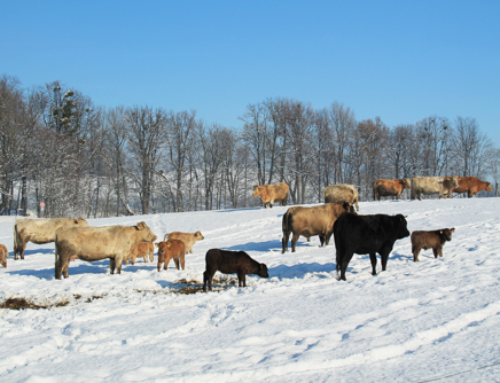
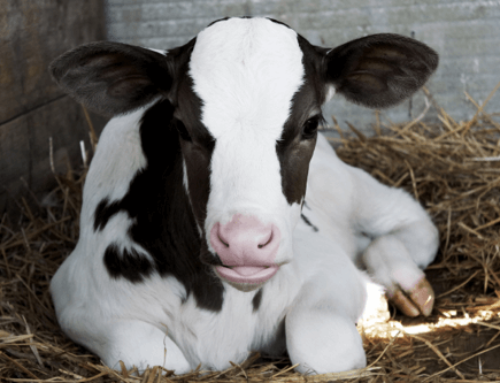
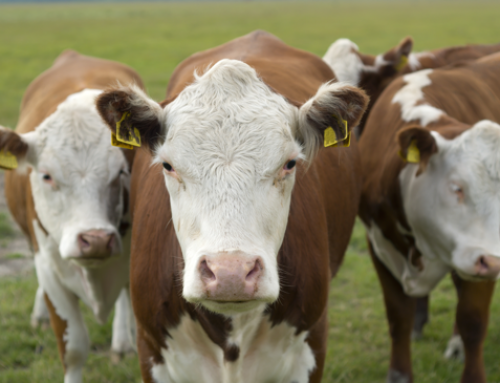
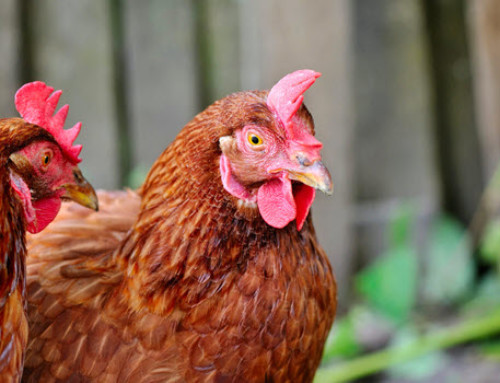
Leave A Comment